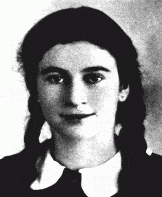
Lillian Moller Gilbreth
Lillian Moller was one of nine children born to a prosperous family. She was a very good student, but her father didn’t think his daughters needed college degrees. She was able to persuade her father into letting her try college. She excelled and graduated with a degree in English as well as a teaching certificate. She continued her education and eventually earned two doctoral degrees, one from UC Berkeley and one from Brown, the second being in applied psychology.
Lillian was a pioneer in the field of Industrial Engineering, where she combined engineering and psychology to improve work practices. Lillian met her husband Frank Gilbreth as she was preparing to travel to Europe. Frank was a contractor and had a keen interest in work efficiency. Frank and Lillian had twelve children because they determined that twelve yielded the lowest cost per child. (Their son, Frank Jr. wrote a semi-autobiographical account of their family, Cheaper by the Dozen, which was made into feature film in 1950.)
While Lillian had the education and was often the innovator in their work, Frank often got the credit. In fact, some journals would not allow Lillian’s name to be attached to publications because they didn’t believe that a woman could be credible as an innovator.
Lillian and Frank established a consulting business to improve work practices. In contrast to Frederick Taylor, the founder of the Efficiency Movement in industrial management, their practice had more of a focus on the employee’s psychological state, not just efficiency. In managing employees, even in an industrial context, you had to take into account their happiness, their mental states, since that would impact their performance. This was primarily Lillian’s contribution from her background in psychology. But when Frank died, several of their clients discontinued their consulting contracts.
In her personal practice, Lillian was an innovator in management practices inside the home, continuing her focus on the human dimension of design. She is credited with such innovations as the foot pedal trash can, shelving on the inside of refrigerator doors, and light switches on walls. She had a number of patents. She also made designs more user friendly by discovering the proper heights for household items such as sinks. She also had innovations for sanitary napkins.
Lillian’s work also included support in the rehabilitation of soldiers who experienced amputations. She worked with President Hoover, a long-time friend, in work-related issues women were facing during the Depression.
Later in life, Lillian turned to education. She traveled widely meeting with students and faculty. She retired at the age of 90. She has been called the “first lady of engineering” and a “genius in the art of living.”
Just imagine the things we take for granted today. All of those things had to be developed by someone. What if we continued Lillian’s focus on bringing ingenuity to the art of living? What would it look like to continue Lillian’s focus on people’s happiness as they perform their activities? Just imagine how it takes the actions of one person who thinks, “there must be a better way.” Just imagine how we might encourage everyone to focus on innovations as part of their life’s calling.
* * *
“There’s a way to do it better – find it.” – Thomas Edison
This is part of our “Just Imagine” series of occasional posts, inviting you to join us in imagining positive possibilities for a citizen-centered democracy.



